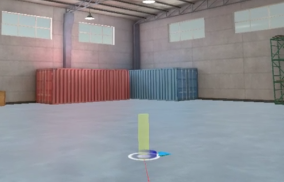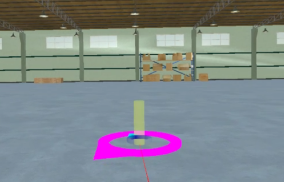Motion through a virtual environment can be achieved through teleporting, also called jumping, when the user’s physical space does not allow them to move through large virtual environments with their body (Point and Teleport).
Types of Teleportation
There are two different types of teleportation based on what self-motion cues the user is able to implement. In partially concordant teleportation, the user can control their view, or where they are facing in the environment, by moving their head or body, but are only able to change their position using teleportation. In discordant teleportation, the user changes their view and position by manipulating the controllers rather than moving their body.


Best Practices
- Provide landmarks near the user and allow for rotational self-motion to mitigate disorientation (Teleporting through virtual environments).
- Use self-rotation and self-translation when possible to prevent disorientation and use boundaries withing the virtual environment to help users orient themselves when teleporting is necessary (Spatial cognitive implications).
- Body-based motion cues help uses form a better mental map of the virtual environment (Rotational self-motion cues).
Example Applications of Best Practices
A house should be decorated with unique objects such as paintings, plants, and toys in all areas to help users remember where they’ve been and decrease disorientation. Outdoor environments should have unique landmarks such as trees, mountains, and buildings for the same reason.
When using teleportation, users should be able to turn and look around by moving their body to help decrease disorientation.
References
Cherep, L. A., Lim, A. F., Kelly, J. W., Acharya, D., Velasco, A., Bustamante, E., Ostrander, A. G., & Gilbert, S. B. (2020). Spatial cognitive implications of teleporting through virtual environments. Journal of Experimental Psychology: Applied, 26(3), 480–492. https://doi.org/10.1037/xap0000263
